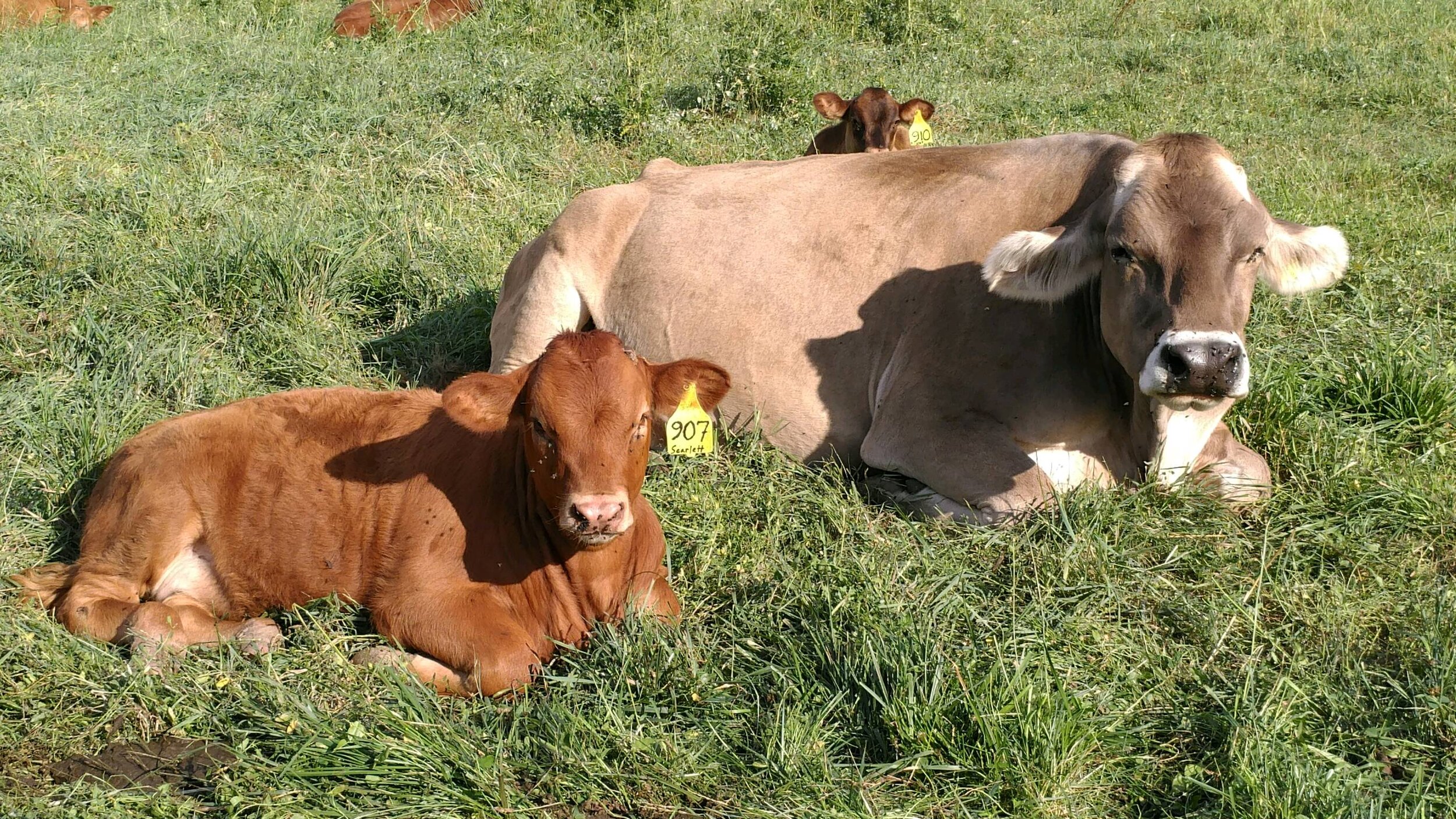Massive Saint John’s steaks cooking over hot coals.
A common misconception about grass fed beef is that it’s tough and difficult to cook. The truth is that it needs to be handled differently that conventionally raised, grain fed beef. It can become tough if overcooked (similar to most meats), and it is tender when cooked properly.
The quality and composition of grass and grain fed beef is starkly different, and this difference translates into different needs for cooking a delicious meal.
In regards to cooking grass fed beef, a favorite phrase of Aaron is “I spent 2 years growing this, you can ruin it in 2 minutes.” Overcooking grass fed beef by 2 minutes can surely render a tough and chewy steak. Here are tried and true cooking tips and guidelines from the Dill family, who’ve been cooking grass fed beef for decades.
Tip #1: Cook roasts low and slow
Slow cooker chuck roast from our recipes page.
The primary rule for avoiding tough cooked meat is to avoid overcooking, but some may not know that undercooking roasts can cause them to be as tough as an overcooked steak.
When cooking a roast low and slow, we recommend a slow cooker on the “Low” setting for at least 8-10 hours. At about 8 hours, check the roast to see if it flakes easily with a fork. If it flakes, it’s done! If not, keep cooking on “Low” and check again every 30-60 minutes.
Tip #2: Invest in tools
A digital meat thermometer is an affordable way to level up your cooking. By using a meat thermometer, you can quickly check the temperature of your meat to cook it to the level of doneness you prefer.
A heavy-bottomed skillet like a cast iron, copper, or stainless steel pan will hold and disperse heat well, ensuring an even cooking to your meat on all sides. As the weather warms up in Spring and Summer, having an outdoor grill with a full propane tank will be essential to prevent the house from overheating when cooking dinner.
Lastly, a slow cooker or Instant Pot can make cooking easier because you are able to “set it and forget it”. The slow cooker and Instant Pot are ideal for cooking roasts or stew meat, and, when you use the low and slow method, you’re guaranteed to get a delicious, tender plate of beef.
Tip #3: Reduce cook time for steaks
Steak kebabs on the grill.
The grill or hot skillet is the cooking method to watch cook time carefully and check the temperature of the meat often to avoid overcooking.
Put the meat on the grill or stove at a high heat for a brief time to seal in the juices, then turn the heat down.Take the meat off the grill or stove a little before you think it is ready, because the heat in the meat will keep it cooking.
Plan to cook steaks 1/2 or 2/3 the time of conventional grain fed beef, then check to see if it is done to your liking by checking the temperature. You can always cook it more.
Tip #4: Ground beef is bulletproof
When in doubt, or if you’re looking for something simple, easy, and “bulletproof”, we highly recommend our organic, grass fed ground beef. With ground beef, you get all the health benefits of grass fed beef with the ease of using your tried and true recipes without fear of having a tough outcome.
With grilling season soon upon us, I hope these tips ensure you maximize your enjoyment of our organic, grass fed beef. Tag us on Instagram to show us your grass fed beef dishes!



































